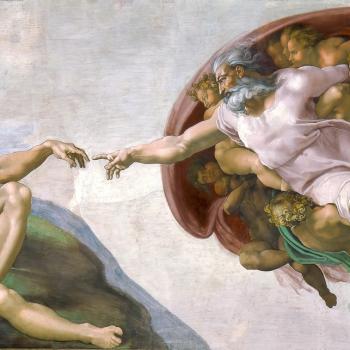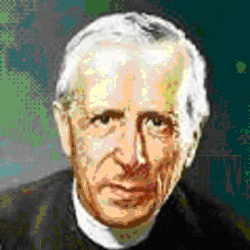Unpacking the Trinity
A huge part of the ‘problem’ of understanding the Trinity is that we are operating with a translation from both the Greek language and the Greek culture. When we speak of three ‘persons’ in the one God, we are overlaying the original conciliar image with fourth century Latin and with modern psychology’s notions of personality theory. Let’s start digging. The Greek word used in the councils was ‘prosopon’ which was the mask worn by an actor when he came on stage, to indicate to the audience what kind of character he was going to depict. There were very many such masks, for instance to depict a tragic role or a comic role. So, the mask was a kind of a ‘heads up’ to the assembled theatre goers.
When the Western Church wrestled with this, it translated ‘prosopon’ (in Greek) as ‘persona’ (in Latin) which literally means, ‘that through which one makes sounds’ i.e., ‘per’ meaning ‘through’ as in ‘permeable’ and ‘sona’ meaning ‘sound’ or ‘sonic’. In actual fact, the mask contained two peep holes for the eyes and one opening for the mouth, so that the actor’s words would not be muffled.
Now, the mask is not the actor, but simply a hint for the audience. The mask was how the audience experienced the role the actor was playing. So, then, the three persons of the Trinity, I contend, was not meant to be an ontological description of who God is, but rather three modalities through which we experience God. It is not a portrait of the utterly ineffable transcendence of God but merely a template to organize our experiences of God’s immanence. So, Christianity went on to develop a theology which arranged these experiences into ‘God the creator’, ‘God the redeemer’ and ‘God the sanctifier.’
Having dealt with the language translation issues, let’s have a look at how modern personality theory has affected our notion of Trinity. In time, ‘persona’ morphed into ‘person’ which was taken to being the totality of the individual human; and ‘personality’ became the descriptor of this person’s interface with the environment of family and culture. By now, the Christian Trinity of three persons had disintegrated into three dudes elbowing each other around in heaven for the best seats.
Carl Jung, who I believe was the greatest psychologist of the 20th century, realized that each ego adopts a mask or even a series of masks e.g., my masks as a son, a sibling, an adult, a priest etc. in order to disguise the ego and make the best possible impression on others. Often the first stage of courting or flirting is two personas trying to seduce each other by wearing the most appealing masks. Unfortunately, in time, the egos will emerge, the personas dissolve and the battles begin. Given enough good will and discipline – and, perhaps, some therapy – the souls of both parties may eventually emerge, and the seduction of the personas and the battling of the egos give way to the dancing of the souls.
One could make the argument that all the great religions have their own trinitarian depictions of Source.
In Judaism, it might look like the following: the God who is, the God who makes covenants with Israel and the God who demands strict adherence to the terms of these contracts. Most of the Pentateuch – especially from Sinai on – consists of breaches and punishments of these covenants.
Though Buddhism is not a theistic system, it has its own trinitarian formula which might be the following: Buddham Saranam gachami (I take refuge in the Buddha), Dharmam Saranam gachami (I take refuge in the Teaching), Sangham Saranam gachami (I take refuge in the Community).
And Hinduism (which I will speak of in much more detail in blog #3 in this series) has two trinitarian formulas. The first is the potently packed phrase, ‘Sat, Chit, Ananda’ which can be unpacked as, ‘Being, Knowledge and Bliss’. I believe that this is also a valid way to exegete the Christian notion of Trinity, with the Father representing the Isness or Essence of God; the Son representing Knowledge or Self-awareness – the Logos or Word of God; and Spirit representing the Love that God has for whom/what She knows Herself to be.
And, if I may digress for a bit more on this Christian detour before I go back to Hinduism, I believe that this particular unpacking of the Christian trinity is not merely a theological exegesis but a profound psychological insight. If God proceeds from Being to Knowing to Loving, then human evolution into enlightenment consists of reversing those steps. I believe that – psychologically and sociologically – it is a mistake to think that I cannot love another person until I first know him. On the contrary, I believe that I cannot know another until I first love him, because the other is not free to be himself until it is safe to reveal or even recognize his core being; and to do this he must first be loved. Only when a person feels loved can she drop the mask and the ego, abandon the defense mechanisms, and recognize and identify with her own soul.
So, on the journey back to God, love comes first, knowledge and self-awareness come second; and being/essence is the final step.
As I mentioned, Hinduism has a second trinitarian formula which I will discuss in the final blog of this series.













